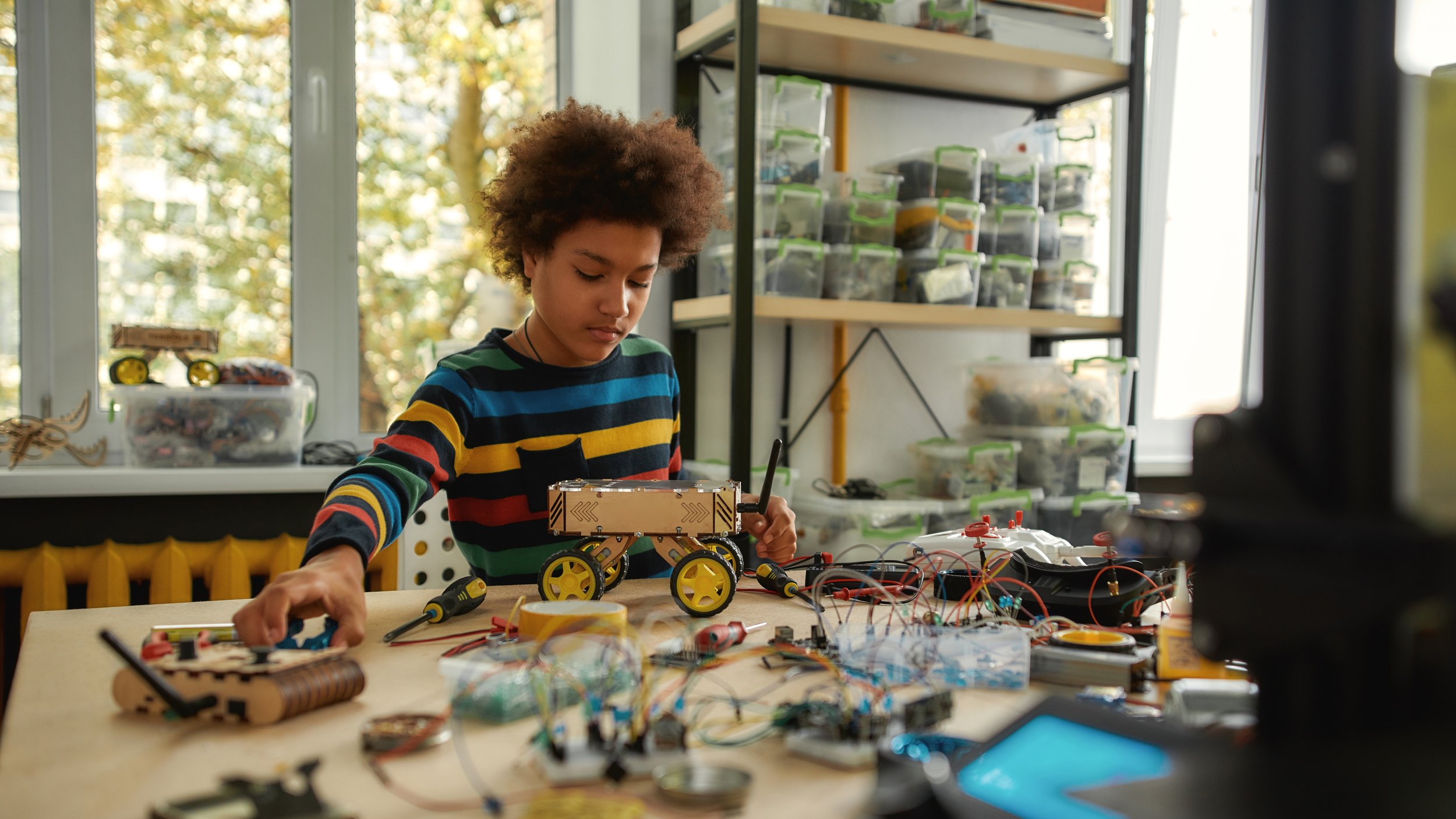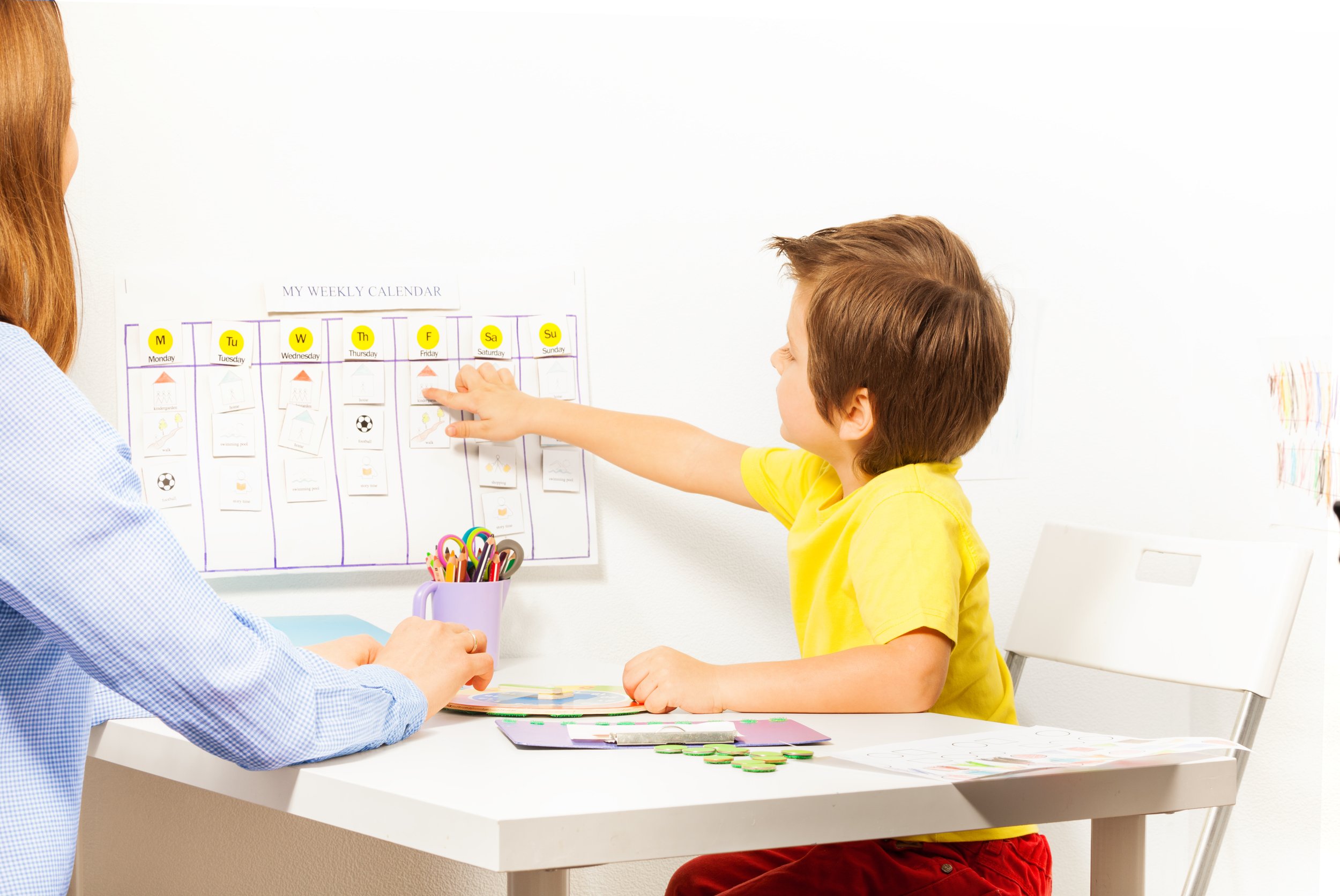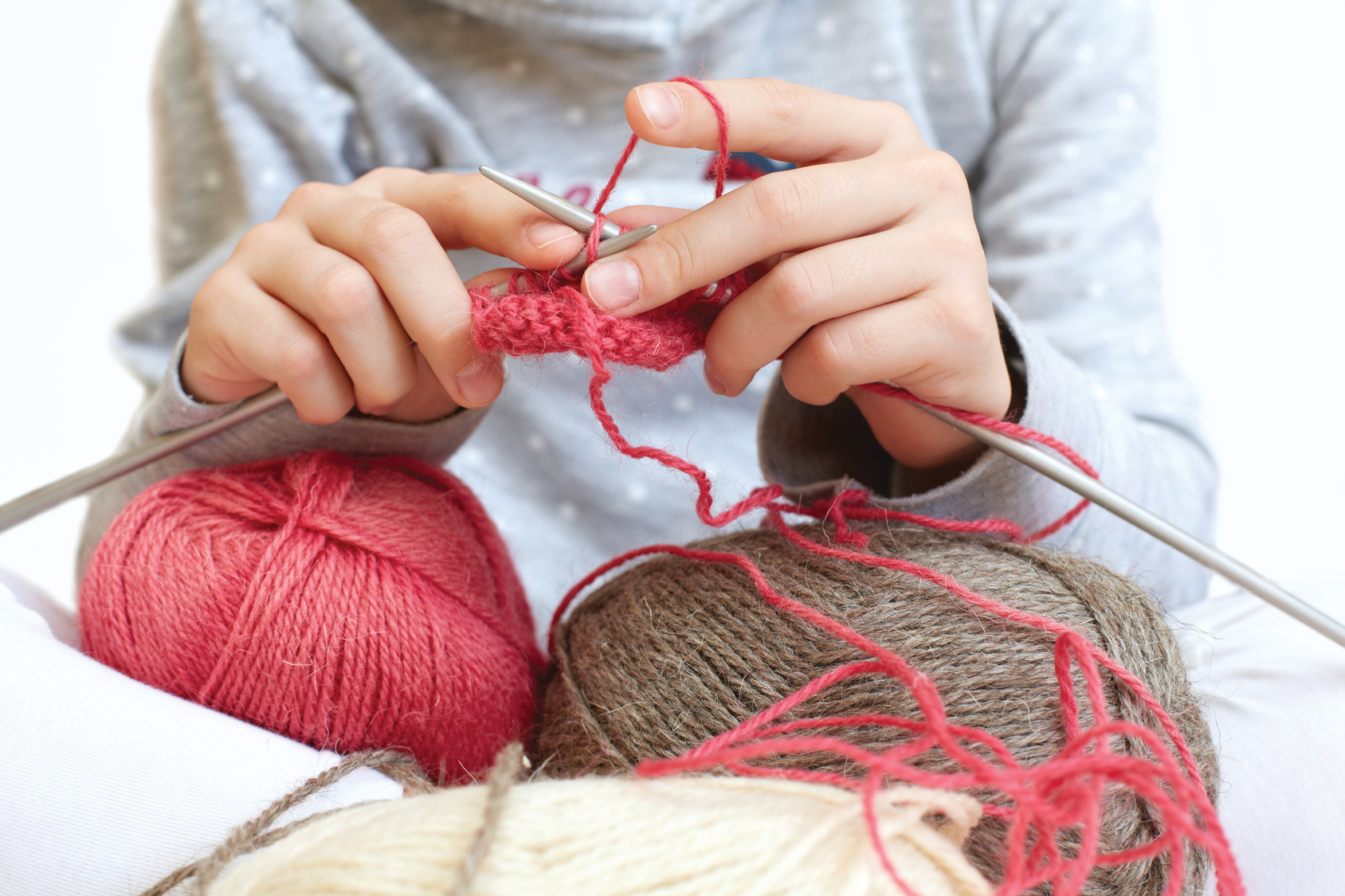You Shouldn’t Compare Your Homeschool to Anyone Else’s
Homeschooling isn’t a competition — so why do we feel so compelled to compare our kids to other homeschoolers and traditionally schooled kids? (Hint: It’s probably more about us than about them.)
Remember that old adage, comparison is the thief of joy? We’ve all heard it. Heck, we may have even used that line on our own children at time or two.
Yet, have you ever thought to yourself in regards to homeschooling: Am I doing enough? Are my kids going to be okay? Have you ever heard an offhand comment by a schooled friend, or even another homeschooler, and thought to yourself: Oh my goodness, my child hasn’t learned that! I am not doing enough! I’m betting you have had those thoughts; I’ve been around the block enough to know that most homeschoolers feel like that at one time or another.
The why is obvious when we stop and think about it: we are so in the thick of it. We are so daily confronted, obviously and nakedly, by a struggling reader or a child who has yet to grasp simple algebra. And when the fear and self-doubt start to seep in, it’s easy to ask ourselves, and really mean it: Can I fix this? Am I up to this task?
And then, accompanying those nagging fears, are those Neighbor McPerfect types. Their children all play soccer, receive perfect grades, and every one of those little buggars takes part in academic summer enrichment activities; and no one at their house seems much worried about hitting certain benchmarks by a certain time because they all surpassed the benchmarks earlier than anyone else in their class. Their children are all college bound, not because it’s where they necessarily belong, but because it is the next rung on the ladder of how to do life. There is a neat, tidy bow wrapped so perfectly around their lives that it almost makes you want to weep with feelings of inadequacy.
Yes, ’tis true, comparison is the thief of joy.
Take a breath and pause for a minute. Why do you homeschool? Take some time— a lot of it if it’s needed— and remind yourself what you’re about.
Of course our homeschooled kids aren’t exact replicas of their schooled peers. Call me crazy, but isn’t that pretty much exactly why we do this? In all honestly, if we cared about following the traditional formula of doing life right, our kids wouldn’t have come home from a traditional school in the first place. No, they’d be in school. Where, I might add, our struggling reader would still be struggling to read, but instead of receiving one-on-one, positive attention in a place where it’s safe to fail, she would likely struggle to hide her perceived inadequacies from her peers.
That kid that just isn’t getting algebra? They’d not be understanding it in school either, and unlike at school, at home you have the option to change the approach you’re using, or buy a different curriculum. You can even shut the algebra book for a bit knowing that when you come back to it, your child’s brain will likely be ready to make sense of what was confusing before.
So why do we compare ourselves (or, let’s be honest, our kids) to our (their) peers? Why do we let ourselves feel so very badly that the very outcomes we wanted (independent thinkers! individualized learning!) are the outcomes we get?
The reality is we all maybe kind of want to parent that child that wins the national spelling bee. That child so very obviously excels at something, and it is so easy to defend homeschooling and demonstrate its efficacy. But the child who struggles to read in third grade? Has homeschooling failed her? On our worst days we maybe kind of believe that it might have.
What if, though, instead of examining the minutia of our homeschooling successes and failures, we instead examined what we are all climbing toward? Schools don’t have a monopoly on getting it right. So what if your local public school requires memorization of multiplication factors in third grade? If your gaze is focused on your academic end goals, you might more clearly see that a love of math is more important long term to the child you see mathematical promise in than getting those times tables memorized at the assigned time. A focus that has its sites set on the academic finish line might more clearly see the value in a child forgetting to do her geometry lesson because she was so wrapped up with her charcoal pencils and her sketchbook. Why is it worse to learn basic geography solely through computer games while never picking up a geography text? Is the knowledge less real because it wasn’t absorbed through textbook and lecture?
It’s not that the way schools do things is necessarily wrong. For many kids those ways work well, and we, like so many of you, do use a lot of traditional things in our homeschool. But my point is this: please don’t allow yourself to get bogged down in the mire. Every parent experiences self-doubt when it comes to their kids, even the ones who are doing it the traditional way. Second-guessing ourselves just means we care about the outcome; it doesn’t validate our doubts.
If you simply must compare a child to someone, compare him against himself. Can he do more today than he could yesterday? Is she an inquisitive soul who last year knew more than you ever imagined a person could know about every dog breed on the planet, and yet continues to learn more in her free time? Can your struggling reader read more today than yesterday? When comparing by those metrics, which are the only ones that matter, there is no joy stealing from the comparison. In fact, I would wager that by those measurements, your child looks pretty darn good, just as they ought.
Comparison can be the thief of joy. . . but only if you let it. I hope you won’t.
How to Get Excited about Homeschooling Again
When your homeschool starts to feel like more work than fun, it’s time to make a change.
When your homeschool starts to feel like more work than fun, it’s time to make a change.
When your homeschool mojo goes missing, the day-to-day work of homeschooling becomes a slog. And this doesn’t just happen to folks who use workbooks — homeschool slump can strike any kind of homeschooler. Sometimes, all you need to get that mojo back is a break — hello, summer! — but if you’re lounging by the pool in late July still feeling blah about next year’s homeschool, these strategies might be just what you need to get excited about homeschooling again.
Do more of what you like and less of what you don’t.
What if you only did the parts of your job you actually liked? This is the questions Marla Koutoujian, a career coach in New York City, who helps professions who feel stuck in a career rut, asks all her new clients, and she says homeschool moms should ask themselves the same thing.
Koutoujian says homeschoolers and corporate bosses often run into the same problem: The better you get at your job, the less you get to do the parts that you actually like. For business folks, this can be a harder problem to navigate, but homeschoolers have the freedom to recreate their homeschool from the ground up every day. Start by thinking about the things you really like — go back in time, too, and think about the moments in your homeschool that brought you the most joy. Those are the things that should be at the top of your to-do list every single day and the things that you should give the most time and energy to because those are the things that give back to you.
This summer is the perfect time to do just that: Make your list, and figure out how to get more of what you love about homeschooling into every single day. Maybe this means you’ll sign up for more classes or that you’ll stop taking so many outside classes. Maybe it means you’ll toss the workbooks or that you’ll buy more workbooks, that you’ll get back to reading aloud every day or that you’ll play outside more. The key is to identify what brings you joy and to build your homeschool days around that joy list instead of a less-than-thrilling to-do list.
Find your social support network.
“I could not homeschool if I didn’t have people to talk to about homeschooling,” says Debra,* a homeschool mom in Ontario. Debra relies on weekly park days with friends and an active online discussion group to keep her homeschool motivation going strong.
A strong support network can be the difference between a ho-hum homeschool and one that’s bursting with energy. “I am much more excited about homeschooling when I hear about other people’s great homeschool ideas and successes,” Debra says. “And talking about challenges sometimes reminds me of solutions I’ve found and forgotten about.”
If you’re not lucky enough to have a strong local homeschool community, keep looking: Homeschool networks tend to be small, grassroots organization that aren’t always easy to find and tap into. The more homeschool events and activities you visit, the more likely you are to find a group that’s the right fit for your family. And if you can’t find a local group, look online: There are tons of homeschool forums and support groups that exist in the virtual world. If your homeschool friends are far-flung, you might also consider starting an online or email group, where you can share your homeschool stories. If you do, Debra recommends establishing the same three rules that she says work well for her group: Limit griping, focus on problems as something to be solved, and share personal experiences (“This worked for me”) rather than giving direct advice (“You should do this.”).
Revamp your space.
Sitting in the same chair and staring at the same walls for years can gradually erode your enthusiasm for anything you do in that space, says interior designer Laila Carsters, who specializes in office design. Start in the room where you spend most of your hands-on homeschooling time — maybe it’s a school room, but it might be your kitchen, living room, or even your back porch. Refresh the walls with a new paint color, hang a few new or moved-from- other-rooms pictures, rearrange the furniture, switch the blinds for sheer curtains to let in more light, introduce a few plants — you don’t have to spend a lot of money or be professionally trained to give your work space a facelift, says Carsters. If even a small redo isn’t an option right now, relocate. If you usually homeschool in the school room, start doing your readalouds in the living room or in the backyard.
Homeschooling Isn’t Just for the Kids
5 surprising ways to build a homeschool life that works for your whole family — including you. “If your homeschool isn’t giving you personal satisfaction most of the time, something needs to change.”
5 surprising ways to build a homeschool life that works for your whole family — including you.
“If your homeschool isn’t giving you personal satisfaction most of the time, something needs to change,” says life coach and homeschool consultant Gillian O’Keefe.
O’Keefe says it’s easy to fall into a rut of thinking “this is just the way things are,” but very few homeschoolers are in a position where they’re helpless to the daily grind. “Homeschooling isn’t a punch-the-clock job — it’s a job that you make up each and every day as you go. So if something’s not working for you about your homeschool, all you have to do is change what you’re doing. You just have to know where to start.”
We bet you’ll find the inspiration you need to look at your homeschool life in a new way in these stories from real homeschool moms who took big, bold measures to get past a homeschool hump, from quitting homeschooling to keeping homeschool going after their kids opted back into traditional school. Whether your homeschool could use a little injection of energy or a big makeover, use the big perspective shifts in these stories to inspire your happiest homeschool year yet.
“I took a sabbatical.”
I homeschooled my oldest straight through high school, but by the time he graduated, I was genuinely burned out — even though I had an 11-year-old and a 13-year-old still learning at home. I tried to get motivated about another year of homeschooling, but that whole summer, as my oldest was getting ready to go to college, I kept thinking, “I just want a break.” And not surprisingly, when the school year started back up, everything felt so ridiculously hard.
My husband works in academia, so I am familiar with the idea of a sabbatical — a planned break from your everyday responsibilities that gives professors a little space to do their own work. And I thought, “I need a sabbatical!” So I took one.
I didn’t move to Tibet. I was still at home, doing laundry and cooking dinner and even going over tricky math problems. But we switched all the boys’ school work to things they could do 90-percent independently. They took online classes and a couple of local classes, and I was just there for support, like a regular mom with kids in regular school. I took a landscape painting class and beginning French at community college, read a big stack of books, none of which talked about homeschooling, and genuinely enjoyed spending time with my family again. At first, I wasn’t sure if I would ever want to go back to homeschooling, but by the next spring, I was eyeing new curriculums with a twinkle in my eye. I didn’t hate homeschooling. I just needed a break. And, three years later, I’m still running on the energy that sabbatical gave me.
—Allison
“I started a homeschool group.”
I liked homeschooling from the very first day, but finding a homeschool group made me feel like Goldilocks: This one was too big, that one was too strict, the other one was too unreliable. I worried and worried about socialization and never having friends for way too long before I realized that I could start a group myself.
This was about 10 years ago, when my girls were 6 and 9 years old. I started by asking a couple of families I’d met through other groups if they would be interested in getting together for a regular park day. (I didn’t want to be a jerk, so I made sure to pick a day that didn’t conflict with another group’s regular park day. I was really nervous about making other groups mad, but it turned out that no one but me really cared.) The park days got pretty popular, and another mom suggested we buy group tickets for The Nutcracker. Soon, we were doing field trips regularly, and a couple of years later, we’d started a co-op.
Both of my kids are done homeschooling now— my oldest is in college and my youngest decided she wanted to go to a private high school with some of her friends — but that homeschool group is still going strong. For me, it became a really important homeschool lesson: You may not find what you’re looking for on the rack, so to speak. Sometimes, to get what you want, you have to make what you want.
—Carolyn
“I stopped teaching math.”
Almost from the first day we started homeschooling, my daughter Alana and I were fighting over math. Every single math lesson seemed to end with one of us in tears. I had nightmares about math. Alana would yell at me that she was stupid, that she hated math. Sometimes she would yell that she hated me. This was so, so, so not what I envisioned when we started homeschooling.
I was talking to my friend, who is a high school English teacher, about how hard math was for us, and she laughed and said, “That’s why I don’t teach math!” She was just kidding, but it made me think. I hated math. I’d never been good at it in school, and it brought up all kinds of stress and insecurity from me. It was so obvious I was passing that on to Alana. And there was no good reason for it. I didn’t have to teach her math.
And I stopped, that day. I bought Teaching Textbooks, which has DVDs with instructions, for that first year, and the next year and every year after that, I signed her up for homeschool math classes at a hybrid school. She’s a junior this year taking trigonometry. Next year, she’s going to take calculus. She genuinely likes math, and, as it turns out, she’s actually pretty good at it.
Outsourcing a subject so completely wasn’t how I envisioned our homeschool. But it was the best thing for both of us, and quitting math has opened up the space for us to have a happy homeschool and a happy relationship, two things I’m really proud of.
—Julia
“I got rid of our school room.”
When we first started homeschooling, I was very excited to turn our dining room into a school room. I bought a big map and a bunch of Ikea bookcases and thought it was the greatest thing ever. I was so proud of that room. It was like having it proved that we were “real homeschoolers.”
But the “school room,” as I liked to call it, soon became one big messy space. However much I cleaned it up, it always felt messy and cluttered. No one wanted to spend time there. The kids did their work at the kitchen table or on the living room floor or on the patio. The school room just sat there gathering dust.
Last Thanksgiving, a bunch of out-of-town relatives decided to visit us. In order to have enough chairs for everyone, we had to move our old dining room table out of the garage and back into the dining room, and I had to pack up all the books and manipulative and science equipment and move it to the garage. A couple of times, one of the kids would say, “Hey, where’s the microscope?” and go find it in its plastic bin. But most of the stuff, nobody missed. Nobody was looking for it. Nobody wanted it.
We started eating at the dining room table again. The kids do their work there sometimes. My partner and I have our morning coffee there. Having a school room is never what made us real homeschoolers. Now our whole house is the school room, the whole world is our school.
—Gwen
“I kept homeschooling after my kids quit.”
Homeschooling was one of my favorite things I ever did, so when both my kids decided they wanted to go to our public school when they started middle school, I was pretty disappointed. I liked seeing them happy, and there was no question that they were where they wanted to be. But I missed homeschooling.
I looked for a job, but my resume had a huge gap and I didn’t have particularly great experience in anything. I couldn’t even get an interview for a cashier job at a craft store. We’d gotten used to living on one income, the kids still needed a ride to soccer and karate, and I still did the shopping and cooking and housework-type stuff, but I was bored out of my mind.
Then one day, when I was sitting home watching the clock for school pick-up time, I thought, well, maybe I’ll try to do that geometry program we didn’t get to use. Learning new things with the kids was my favorite part of homeschooling, and it turned out I liked learning things on my own, too. I learned geometry and algebra, Revolutionary War history, all about the Stuart kings of England, The Great Gatsby, all kinds of things. I pretty much homeschooled myself, and I ended up going back to college at 47 to study environmental science.
—Christine
How to Be a Great Learning Leader in Your Homeschool
We all want our homeschools to produce curious, creative kids, but we shouldn’t forget that our children copy what they see us doing. If we want our kids to love learning, we have to show them that we love it, too.
Homeschool parents aren’t just teachers — they’re encouragers, motivators, soothers, supporters, look-things-up-ers, and more. Your job, whether you want it or not, is to set the tone for your homeschool. We all want our homeschools to produce curious, creative kids, but it’s easy to forget that our children copy what they see us doing. In other words, your kids are going to follow your lead, not your words when it comes to their learning behavior. If that thought scares you, take some time this summer to develop your learning leadership skills.
Find your own passion.
Whether it’s learning to crochet or studying Latin, becoming a Master Naturalist or running every day, one of the most effective ways to encourage your kids to follow their passions is to follow your own.
“Moms especially have a tendency to prioritize other people’s needs and wants over our own,” says Julia Hermann, PhD, a family therapist in Sarasota, Fla. “It’s important to show children that their parents have interests and priorities of their own. Not only does it help children develop empathy, by understanding someone else’s position, it also encourages them to treat their own hobbies and interests with the same respect and commitment.”
Of course, making time to identify, much less pursue, your own interests can be easier said than done for homeschool parents. Hermann suggests adding one thing at a time to your schedule, just the way you’d add one of your child’s interests: look for a class and dedicate a little time each day to practicing your passion. Taking a class can seem impossible when you look at your schedule, but even if you can’t manage a real-life class right now, you can find online classes on almost every subject. And reach out to your community: That mom at park day with the ever-present knitting projects might be happy to teach you the basics, or your homeschool group might be interested in pooling resources to hire a yoga teacher for parents during the kids’ classes.
Go further up and further in.
One of the ways I stay excited and motivated about homeschooling is by digging into the subjects that we’re studying on my own terms. I keep my library hold list full of books on American literature, nature journaling, anime studies — you name it, if it’s on my kids’ to-learn list, it’s on my list, too.
Good for me, says Marla Koutoujian, a career coach in New York City, who helps professions who feel stuck in a career rut. “Once you stop learning, you stop being inspired, and once you stop being inspired, it’s impossible to be inspiring,” Koutoujian. It may not make sense to immerse yourself in every subject, but take note of the areas where your kids’ motivation seems to lag. What’s your interest level in those subjects like? If it’s just as low, this summer is the time to find out why math — or handwriting or French or whatever’s not clicking in your homeschool — is awesome. Read books. Watch TED talks. Listen to podcasts. Find something about that subject that interests you, and then find out more. Your excitement will come through, and there’s a good chance your kids will pick up on your excitement and want to be a part of it, too.
What if you can’t find a viable point of interest for a particular subject? I’d argue that there’s an interesting angle to almost everything, but if you’re hitting a brick wall with finding the inspiration in a particular subject, it might be time to rethink why it’s on your list at all. If it’s not interesting to you or your kids, why are you spending time on it? Maybe you have a perfectly valid answer — “My son has to pass a test in this subject to get into his favorite summer camp.” If that’s the case, consider tracking down an outside or online class to cover the material with him so you can focus on the things you do like. Just try to avoid leading subjects that you really don’t want to follow. On the other hand, maybe there’s no good reason to stick with the not-working-for-us subject, and you can just let it go for now and focus on the things that do light your fire.
This is excerpted from the summer 2016 issue of HSL.
Growing Curiosity
The way I garden is the way I homeschooled. I planted seeds, added plenty of supplies, space and time, and hoped for the best.
The way I garden is the way I homeschooled. I planted seeds, added plenty of supplies, space and time, and hoped for the best.
“How you do one thing is how you do everything,” I read on the back of a shirt. The quote has been running through my mind all summer as I’ve been inventorying my life thus far, a process inspired by turning forty and having a child graduate from high school. Milestones have a way of tripping me up and making me look backwards to see what I tripped over.
The quote rings most true when I sit on my back porch and contemplate my garden. How I garden is how I do everything. I plant seeds, add water, and hope for the best. Last May we relocated our garden to a different part of our yard, built a fence around it to keep the dog out, and constructed several low and long garden boxes. My husband installed an automatic sprinkler system, and I planted a variety of seeds and seedlings.
For the first few weeks of summer, I’d go out every morning and check how many seeds had sprouted and how much taller the tomatoes had grown inside their cages. Then I started to notice seeds I hadn’t planted sprouting in between the garden boxes. Some I recognized as edible — purslane, tomatillos, borage, squash — so I left them to grow rather than weeding my rows.
By mid summer, my garden was a jungle. The raised beds were no longer visible. The tomatillos grew taller than me and competed with the cucumbers for vertical growing space on the trellis. The purslane made it impossible to walk between garden boxes, and the borage grew so bushy that I had to hang on to the fence to edge around it, careful not to disturb the dozens of bees buzzing among the purple blossoms. The single zucchini seedling I planted crowded out the bush beans, which in turn grew at an angle, seeking sunlight, and crowded out the beets. The beets didn’t stand a chance when the lettuce in front of them bolted during a particularly hot week in July.
All of this is to say the way I garden is the way I homeschooled. I planted seeds, added plenty of supplies, space and time, and hoped for the best. Some of the curriculum I carefully selected was crowded out by interests discovered by my children, such as the state by state unit study I purchased online which they rejected in favor of collecting commemorative state quarters to fill up a coin collector’s map of the United States.
Some topics popped up out of nowhere and grew with us for years, like the Percy Jackson book we listened to on a road trip which inspired a deeper study of Greek mythology, culture and language. Our interest in geology began similarly, with a single unusual rock found on a walk along the railroad tracks, a discovery which prompted us to collect and study a stack of books about rocks and minerals, go on field trips to mines and rock shops, and spend countless hours rock hunting to amass a large collection of unusual rocks.
Other topics grew steadily, occupying exactly the space we had allotted, never overshadowing other topics, but occasionally surprising us with growth spurts, like the math curriculum we tended to every day, which grew into a solid foundation for my children to advance their math skills when they transitioned into traditional school. My daughter texted me while on break during her first college math class to say, “I finally understand scientific notation!” A seed planted years ago had finally sprouted.
It’s now late summer. As I survey my garden I see ten foot tall sunflowers so heavy with seeds that they’re bent over, their tired blossoms touching the ground. The yellowing cucumber vines have conceded to the tomatillos, which are bursting from their chartreuse green, paper like wrappers. The tomatoes are so overgrown I can no longer see the metal cages which once dwarfed them. It’s time to harvest the fruit, save a few seeds for next summer, and start planning and planting our winter garden.
It’s also time to sort through the cabinet full of homeschool curriculum my children have outgrown; recycle the math notebooks, keep a few samples of writing for posterity, and pass along the state by state curriculum, never used, to another homeschooling family. Perhaps I’ll pop the coins out of our state quarter map and pass the map on as well, see which one sprouts interest in their children. It will be like sharing seeds with fellow gardeners, who, like me, grow curiosity.
Finding Out: Curiosity as a Way of Learning
When you shift your focus from WHAT to learn to HOW to learn, magical things can happen.
When you shift your focus from WHAT to learn to HOW to learn, magical things can happen.
In the Northern Hemisphere, it’s caterpillar season. The leaves are bursting forth from the trees, grasses are growing taller, birds are building nests, bats are waking up and they’re looking for food for their young. My youngest child’s insect project is ramping up and we are spending more time with our hands in hedges than sitting down and holding a pencil.
When we first started home educating, I kept a mental checklist for most tasks we’d do. Running around in the park? That counts as PE or recess. Baking a cake? I’m sure that counts as math. Making bracelets? Definitely good for fine motor skills. Looking for caterpillars in hedgerows? That must be science. It felt good to think that every aspect of our lives could “count as school.”
If my five-year-old son was in school, his teachers would be helping him work on his pencil grip, form letters and understand phonics and the basics of mathematics. At home, my son only holds a pencil or pen for about 15 minutes every day. Maybe I should worry. Maybe he will never learn to write his name!
“That skill—the ability to find out is the key, for me, to being a successful learner. ”
But I don’t worry. I don’t worry at all about his writing. The reason is not that I’m ultra-confident. I’ve got all sorts of worries about my children. But when I watch my son gently lift a caterpillar from a leaf and hold it with precisely the correct amount of pressure and grip to keep that caterpillar safe from harm in his hand, I know my son has all the fine motor skills he needs to write his name. When he pulls out one of his nature books, turns to the index and asks me to look up that caterpillar’s food plant or when he opens the tablet and pulls up a document about caterpillars, I can see that he understands about letters and language and what they are intended for. He knows where to go to find out what he wants to learn. In short, he knows what he needs to do to find out. That skill—the ability to find out is the key, for me, to being a successful learner. The thing is, he knows what he wants to learn and he knows how to find out. Gradually he will arm himself with the skills to find out, perhaps by asking me for help or by figuring it out himself.
He will eventually learn to write, because he wants to find out.
He will learn to read, because he wants to find out.
He will become numerate, because he wants to find out.
I am here to mentor him, to help him learn the skills he needs, to encourage and support him when it’s hard. I want to nourish his curiosity and support him while newer and more exciting doors open to him.
I used to box-tick and think about whether what we were doing “counted as school.” Now I hardly think about school. I simply wonder what he’ll be finding out next.
A Day in the Life: Homeschooling a 12th Grader and a 6th Grader with a Full-Time Job
There’s no “typical homeschool day” in our house, but here’s a representative day from 2019, when my oldest was a senior in high school, my youngest was a 6th grader, and I was juggling homeschooling with a full-time job outside the home.
There’s no “typical homeschool day” in our house, but here’s a representative day from 2019, when my oldest was a senior in high school, my youngest was a 6th grader, and I was juggling homeschooling with a full-time job outside the home.
(I wrote this for the magazine last fall when we were in the middle of my daughter’s senior year.)
Over the years, I’ve published a few different “day in the life” glimpses into our homeschool, and the thing they have in common is that they’re all completely different. Our homeschool shifts all the time — with the season, with my workload, with the kids’ interests. It’s never been a fixed and static thing, and I love that about it, but it also makes it hard to say “look, here’s what a typical homeschool day is like for us.” The “typical day” is probably a myth — but I thought I might share with you a representative day from this fall.
I wake up before 6 A.M. and start coffee while I check my messages. I work on a few short pieces for the magazine and double-check my lessons for the day — it’s Monday, so I’m teaching middle school chemistry and creative writing — while everyone else is waking up and having breakfast.
Around 9:25 A.M., my daughter logs into her online college class and the rest of us load up to head to the hybrid school we started a few years ago. My son is a 6th grader in the junior high, and he loves learning with other people so much I wonder what we would have done if we hadn’t started a twice-a-week school for him to go to.
Students arrive by 10 A.M., and Suzanne and I grab a few minutes to plan while Jason starts a lively Spanish lesson. I’ve got a scavenger hunt review lined up for chemistry, and Suzanne turns out to be a genius at figuring out good hiding locations.
Then we head off to do our things: I’m reading my daughter’s essay on Cry the Beloved Country, which she has declared “a mess.” It’s not a mess, though I can see why she thinks so — she’s got lots of ideas, but she needs to go back to her thesis to figure out how to hold them together. By now it’s 11:30 and she’s done with her class, so I FaceTime her, and we go through it together. At first technology felt like a weird addition to our homeschool, but it’s made it possible for us to keep homeschooling while I work full-time outside of our home, so we’ve adjusted.
Suzanne and I have lunch together, working through a book list for the high school’s spring semester. As usual, Suzanne has almost too many good ideas, and I am going to have to winnow my now-gigantic list down.
After lunch, I get the kids started on the chemistry review scavenger hunt, sending them racing around the school in search of hidden envelopes. They almost don’t realize they’re reviewing the periodic table. They find the last clue and crack the code, so we move onto creative writing. I’ve been trying to help them understand the plot arc, so we’re playing a variation of Dixit to practice the different parts of the arc.
When I get home, it’s around 4:30 P.M, and my dog is very, very excited to see me. I start dinner and take him for a speedy walk around the block. My daughter joins me, and we catch up about her day — she was working on some math as well as her computer class and essay writing.
We keep chatting while she helps me with dinner, and my son joins in, too, telling her about a new version of the Preamble to the Constitution that he and his classmates made for TikTok. They’re both giggling while they set the table, and we sit down to eat around 5:30.
After dinner, Jason heads off to teach math down the road, the kids settle in for video game time, and I sit back at my computer to work on the winter issue of home/school/life. I’ll work until about 11 or so, listening to a lecture series on the Hittites in the background. I end up chatting on Slack with a student about roller derby for about 20 minutes, too.
Around 10, the kids come clattering down with our current readaloud — Tristan Strong Punches a Hole in the Sky, which I loved and am excited they’re getting into — and we read together for about 30 minutes. I’m thankful every night that we’ve managed to hold onto this piece of homeschooling that I love so much — snuggling up on the couch, reading together, and talking about what we’re reading. Because while lots of things about our homeschool have changed — and more will probably change in the future — this core piece has been part of our homeschool from the beginning.
8 Ways to Spark a Breakthrough in Your Homeschool
What you can do is engage in the process of putting the spark back in your homeschool exactly the same way you started your homeschool in the first place: with patience, trial and error, and a little expert advice to get you started.
Engage in the process of putting the spark back in your homeschool exactly the same way you started your homeschool in the first place: with patience, trial and error, and a little expert advice to get you started.
Stuck in a rut? The good news is that the occasional rut is part of the natural evolution of a homeschool that’s going well. It’s tempting to view these plateaus — when things are going fine but no one is especially inspired — as a negative. After, all being stuck in one place feels like a problem. But reaching a plateau is usually the result of a lot of committed hard work. When your homeschool plateaus, it’s because you’ve finally gotten things to a place where you’re comfortable and confident with what you’re doing.
After all those years agonizing over curriculum choices, charting individualized learning course designed with your individual kids in mind, and sacrificing substantial amounts of free time and financial wiggle room to make your homeschool work, realizing that you’ve reached a point where you’re so relaxed that everyday homeschool no longer holds major challenges should be as much a celebration as a cause for concern.
So pause, take a deep breath, and appreciate the fact that you’ve climbed high enough to be temporarily stuck. For most of us, it’s no easy task to reach a point where our students are learning, our work is respected, and we’re ready to tackle whatever obstacles attempt to block our paths.
“Contrary to popular belief, a rut isn’t a problem that you should take personally,” says Jenny Blake, author of Pivot: The Only Move that Matters Is Your Next One. “When you hit a plateau, it means you have succeeded in what you were trying to do, and now you are ready for the next even greater growth, meaning, and impact.”
A lot of the early homeschool experience is about climbing: You’re constantly stretching yourself to define and meet your goals. You’re learning new things every day. You’re always trying something new, and poring over books, journals, and homeschool Facebook groups for new ideas for history or science. But a moment comes when your efforts actually pay off: You’re no longer having to create every day, every subject, every year from scratch. Joshua Foer, author of Moonwalking with Einstein: The Art and Science of Remembering Everything, calls it the “OK plateau,” a point where you’re good enough to phone it in when you need to. You no longer have to push yourself every minute to learn new things or experiment with new learning techniques. Your days have found a comfortable routine. You can predict with a reasonably high degree of accuracy what math curriculum will work best for your middle schooler or when your 6-year-old needs a structured spelling program and when he’s learning spelling fine on his own. You’re not worried every minute about getting it right because you know what you’re doing. Plateaus are moments of triumph, but they’re also signs that you need a new challenge to keep learning and growing.
Not every plateau is bad — if you’re starting a new job or project of your own, you may find that a homeschool that runs almost on its own is just what you need. “Not every project has to challenge you, but if nothing in your life is challenging you, you’re going to get very bored, very fast,” says clinical psychologist and life coach Jenny Radcliffe. “You can be in a perfectly enjoyable rut with one part of your life as long as you’re getting challenged in another part.” It’s only when a rut starts to feel like a rut that you need to worry — if you’re bored, frustrated, or unsatisfied, those are signs that it’s time to start climbing again.
“People don’t stop needing to learn and grow, but when you’re busy enough and good enough, you often forget that as complicated as challenges can be to navigate, overcoming them is part of the satisfaction you get with growth,” says Leslie Griffen, a career coach and consultant. When you don’t need to get constantly better to achieve your everyday goals, you can gradually lose passion and satisfaction without even realizing that it’s happening. And when you finally realize it, you’re bored, frustrated, and ready to make any change just so things feel different.
Lots of people make the mistake of jumping right into major changes as soon as they feel stuck, but if you let yourself live for a while with your dissatisfaction, you’re more likely to find a satisfying breakthrough. Realizing that you’re at a plateau isn’t the time to major changes — resist the urge to totally revamp your science curriculum or start studying French or launch a new co-op. Instead, give yourself space to really feel the boundaries of where you are right now and to imagine where you’d like to be a year from now. You can’t force or rush a breakthrough, says Foer. “Breakthroughs often seem like they happen overnight, but — just like reaching a plateau in the first place — getting to a breakthrough is a process that can take time and effort.”
What you can do is engage in the process of putting the spark back in your homeschool exactly the same way you started your homeschool in the first place: with patience, trial and error, and a little expert advice to get you started.
Spark a Breakthrough by Thinking with Your Feelings.
Often, the change we need isn't an intellectual shift but an emotional one.
Danielle* has been homeschooling her three children since 2012, but last year she found herself dreading Monday morning. It wasn’t that things were terrible — she almost felt bad complaining when other people were dealing with math meltdowns or frustrating games of musical curriculum — but the days felt long, and she daydreamed about sending the kids back to traditional school. Then one day it hit her: Homeschooling wasn’t fun. It was engaging, it was academic, it was working well for her kids, but there was a big ingredient missing.
Danielle tried to remember the last time homeschooling had felt really, truly fun. She remembered a big family project, making a board game version of the story of the Odyssey after they listened to the audiobook together. They’d spent weeks drawing the board with its different islands, making cards for each of the characters, and inventing an increasingly complicated set of game rules. They’d had to wrap up quickly, though, Danielle remembered, because she’d only allocated eight weeks to the Odyssey, and it was time to move on.
“That’s when it hit me that the problem wasn’t that I was bored, the problem was that I’d gotten so fixated on a particular destination that I forgot to enjoy the journey,” Danielle says.
She shifted into slow gear immediately. Instead of keeping herself focused on what came next, Danielle immersed herself in what was happening right now, whether that was long-division or medieval Europe, and she encouraged her children to do the same.
“Honestly, our days look almost exactly the same,” Danielle says. “No one on the outside would know anything had changed. But now our homeschool feels like a place I am excited to be every day.
Spark a Breakthrough by Embracing Complete and Total Failure.
Sometimes transcendence comes after a spectacular crash-landing.
“I remember one of my bosses in the tech world telling me after we’d had a launch we’d worked on for almost a year go so completely wrong that we had to re-start the project from scratch that one day, I’d say that failure was one of my biggest successes,” says Laurie*, who left her tech job in 2003 when her son Aiden was born. “She was right, but it was many years before I was able to apply that lesson to my homeschool.”
Sometimes ruts happen because we’re afraid to fail. We stop taking risks, we play it safe, and eventually, our homeschool goes stagnant. Diving into a new challenge doesn’t always mean that you’ll succeed, especially if you define success as having everything go perfectly. (In fact, we can pretty much guarantee that it will almost never mean that.) But if you expand your definition of success to include the willingness to try something, the courage to admit that you’ve failed, a willingness to see where you can improve, and the strength to try again, failure can become a necessary ingredient in the recipe for success.
“If I fail, I know I am one step farther down the road to doing it better,” Laurie says. “As Samuel Beckett wrote: ‘Try again. fail again. fail better.’”
Spark a Breakthrough by Not Trying to Spark a Breakthrough.
Determination and hard work will take you far, but sometimes what you really need is a little fun.
“If you’re working too hard at a breakthrough, you may be working yourself right out of one,” says Kathlyn Hendricks, Ph.D, an Ojai, Calif.-based life coach. Hendricks says working hard is part of success, but for innovation, hard work isn’t enough unless you have a spark to inspire it.
“Many of the world's inventions don't come from people simply working hard and throwing themselves at a project,” she says. “They come from wonder — from curiosity and a willingness to be delighted. That is your fuel source and your reservoir, and most people need to practice it at least 10 minutes a day.”
Hendricks suggests setting aside time every day for just plain fun — do something that engages your mind and that you enjoy without trying to figure anything out or come up with a grand plan. Just play. Let your mind roam where it will. “That’s where new ideas happen,” Hendricks said. “That’s when you know how to focus your work in the most productive way.”
Spark a Breakthrough by Recognizing that Your Breakthrough Only Has to Make Sense to You.
A breakthrough sounds like something that should be worthy of a ticker-tape parade, but it's OK if you're the only one who knows it happened.
Patti’s* biggest homeschool breakthrough was a purple pen. It doesn’t sound very exciting, but for Patti, that pen changed everything. “My daughter was a reluctant writer,” Patti says. “She’d moan and groan her way through every writing assignment like it was torture. She was a fine writer when it came to the actual work. I think if she’d been really terrible at it or really good at it, I would have found better ways to handle it, but I didn’t know what to do with a 7th grader who could write just fine but hated to do it.”
Lots of things in the their homeschool were going right, so Patti let the stress about writing simmer on a back burner of her mind. There were more important things to deal with and more fun things to enjoy, so the writing issue was just a nagging annoyance. “I didn’t worry about it every day, but I thought about it every day,” Patti says.
Then, just by chance, Patti grabbed a purple pen out of the art cabinet to make notes on one of her daughter’s essays. The pen looked pretty on the page, and Patti found herself writing more than she ever had before, circling places where her daughter had chosen the perfect word, jotting questions in the margins, suggesting alterations for choppy or unclear sentences. When she finished, she felt guilty; she’d been having so much fun writing notes that she hadn’t realized how scribbled-over her daughter’s paper would look.
To Patti’s surprise, though, her daughter was thrilled. The extra feedback seemed to be the magic missing piece she needed to get excited about writing. Suddenly writing was a pleasure, and Patti and her daughter both started looking forward to writing assignments.
“It’s such a little thing that it seems almost silly to call it a breakthrough,” Patti says. “But for us, that’s what it was.”
Spark a Breakthrough by Putting Yourself Out There.
Sharing your big plan can help you put it into action.
When you know what you need to do but you need a push to do it, putting your intentions out into the world might be just what you need, says Blake. “We all feel inspired to push through the hard stuff if we know people are holding us accountable, even in a loose way,” she explains.
That was definitely true for Ashley*, who announced her intention to start a homeschool co-op to her circle on Facebook long before she felt totally confident that she was up to the task. Ashley had been dreaming of connecting with a group of like-minded homeschool parents who could team up to put together a middle school program that would take the pressure off her—and other parents — to teach classes outside their comfort zone, but she knew it was a huge undertaking.
“I knew it was what we needed if we were going to keep homeschooling through middle school, so I posted it on Facebook: ‘Looks like I’m going to be starting a homeschool co-op for this fall. Y’all wish me luck.’”
Friends immediately jumped in to wish her luck and to volunteer to help out — one even offered up her preschool classroom for afternoon classes a couple of days a week. Knowing that people were paying attention, Ashley kept pushing forward, and her co-op celebrated its third birthday this fall.
“I might be posting about a high school co-op soon,” she says. “We’re coming up on 9th grade!”
Spark a Breakthrough by Recognizing that Breakthroughs Can Be Incremental
Sometimes a breakthrough is a series of small changes that add up to a big difference.
We tend to think that we’re making progress when something big and dramatic happens — we invest in a new curriculum, we join a co-op, we start a new grade. But often, we’ve got breakthroughs-in-the-making going on all the time. They’re just less flashy and exciting, so we don’t notice them.
Cynthia* says her son’s reading breakthrough was almost three years in the making. Anton, who was 6 at the time, was not interested in anything to do with reading, though he enjoyed making up stories and having his mom read books to him. So Cynthia took a deep breath and decided to follow his lead. Every once in a while, she’d see an idea that might appeal to Anton and added it to their schedule. Anton enjoyed running the letters of the alphabet, as their Oak Meadow curriculum suggested, and he liked dictating stories to him mom, who wrote them down so he could illustrate them. When he finally started reading, enthusiastically and independently, he was 9 years old.
“I would call it more of a process than a breakthrough, but it definitely felt like a breakthrough when he started tearing through the Percy Jackson series this summer,” says Cynthia.
Incremental changes that address your child’s abilities and interests can add up over time to the kind of big breakthrough that revolutionizes your homeschool, even if they feel less dramatic in the moment. In fact, these slow-and-steady breakthroughs can feel the most successful because you’ve worked long, hard, and patiently to earn them.
Spark a Breakthrough by Embracing a Little Silliness
Just because you're taking things seriously doesn't mean you can't find epiphanies through play.
We’ve got goals, we’ve got plans, we’ve got to-do lists, and we’re ready to tackle this homeschooling thing wholeheartedly. Whether we’re totally relaxed unschoolers or seriously academic school-at-home-ers, we are all committed to giving our kids the very best education we can with the very best tools available to us. We take our jobs seriously. But sometimes, maybe we shouldn’t.
“One of the things I’m always telling new homeschoolers is not to forget the fun,” says Teresa*, who runs a workshop for her homeschool co-op helping new homeschoolers get started. “If you don’t have fun, none of the other stuff matters.”
When her own homeschool starts to slump, Teresa says she’s learned to immediately ask “What was the last thing that made us really laugh?” The answer usually reveals what’s missing: “If we last had fun reading a funny book together, I hit the library for a new readaloud. If it was on a field trip, I know it’s time to plan a field trip. If it was a documentary day, I start scanning Netflix. I’ve learned to trust that fun will take us where we need go,” Teresa says.
Spark a Breakthough by Doing It Yourself
Sometimes, a breakthrough is as simple as asking yourself, "Is there another way to make this happen?"
When Amanda* realized her homeschool had fallen into a serious rut, she knew exactly what she needed. The problem? What she needed didn’t exist.
“My kids were bored stiff with the way our traditional history program was structured, and since the rest of our curriculum was built around history, boring history meant boring everything,” Amanda says.
She tried half a dozen different programs, including homeschool favorites like The Story of Us and History Odyssey, but the hands-on, critical thinking-focused, biography-heavy program she was looking for wasn’t out there. She kept trying to make the not-quite-right programs fit into her homeschool, but one day, she realized that there was no point in trying to force a fit that just wasn’t there.
“When school didn’t fit, we made our homeschool,” Amanda says. “I don’t know why it took me so long to realize that when history didn’t fit, we should make our own history.”
Amanda and her two children ended up building a curriculum from scratch, all contributing ideas and resources to the project. After a year of compiling and creating together, they had a history plan that carried them happily through middle school.
*last names omitted for online publication (This feature was originally published in the fall 2017 issue of HSL.)
How I Talk to My Friends about COVID Homeschooling
My friends are all excited about homeschooling right now, but their definition of homeschooling turns out to be pretty different from mine.
My friends are all excited about homeschooling right now, but their definition of homeschooling turns out to be pretty different from mine.
“Homeschooling is booming now,” says my old friend Charice. “You guys were trendsetters.”
“Yep,” I say.
A few months ago, I would have launched into a big explanation of how doing school at home online isn’t really homeschooling — or at least, it’s not really how Malcolm and I do homeschooling. It was important to me to clarify the differences: For me, homeschooling was a big choice. It had been challenging sometimes and lonely sometimes and rewarding almost all of the time, but it was very different from following along with an online curriculum that our school district published online every week. And I found myself frustrated that people couldn’t understand that difference. I wasn't magically prepared for the world to shut down either — homeschooling was harder in a socially quarantined world, too.
And at first, I tried really hard to help the loose acquaintances with a million questions about homeschooling. I talked to them about how we developed our schedule through months of living, how we chose the subjects we would work on, how we found the resources to help us explore those subjects. But the more I talked, the more I realized that I was wasting a lot of energy — homeschooling wasn’t what these people wanted. What they wanted was the same thing I wanted: A way to get through an impossible situation with our families’ hearts and health intact. Most of the people asking me about homeschooling were really asking how to manage their school’s online curriculum at home, which is certainly a reasonable thing to ask about, but not really one of my areas of expertise. I was wasting my time and their time because we weren’t talking about the same thing. Many of them never even responded to my lengthy text messages, full of information and support, even with a casual “thanks.”
I found myself falling down a hole of irritated self-righteousness. These people didn't understand what homeschooling was — and they didn’t really want to. They had no interest in homeschooling their kids. It took me a little while to realize that that was totally fair. I was getting upset over the way they used a word and because it felt like their questions negated my own hard-earned experiences. I realized we were all exhausted and worried trying to pretend that this was a “new normal” and not a complete and total abnormal. It wasn’t my job to teach these newly at-sea people how to learn in this weird new space any more than it was their job to teach me how to learn in it. What we could do was be kind and help each other when we could, without letting that help become a burden that we would start to resent.
So here’s what I do now when one of my in-school acquaintances comes to me to ask about homeschooling through quarantine. I don’t try to explain how my homeschool is different from what they mean, I don’t walk them through my philosophy and plans, and I don’t point them toward the curriculum I love. Instead, I remind them that we’re all doing the best we can. I talk to them about establishing a rhythm that gets everybody out of bed and fed and moving around during the day because that’s something I do think COVID homeschoolers can benefit from, too. I shrug when they ask where they can find a free online program that will cover every subject and grade every assignment, and I recommend that if their goal is to return to public school, they stick with the public school’s online program. “Getting your homeschool up and running, figuring all of that out, is probably the hardest, most labor-intensive part,” I say. “If you don’t want to homeschool beyond the present crisis, it’s probably not worth it.”
I remind myself — and Charice — that we are not alone in all this. However our kids learn, this new challenge is our shared reality, and we can help each other, even if it’s not in the ways we might think. Charice introduced me and Malcolm to an online jazz class that has had us rocking out together on the couch every Sunday night, and I lent Charice a box of Malcom’s math manipulatives that have made a big difference in her daughter’s online math classes. I still think it’s a stretch for her to call herself a homeschooler, but that doesn’t really matter much in the grand scheme of things. What matters is that I have a chance to make my world a kinder, more supportive place, and I’d be crazy not to seize that opportunity.
6 Ways to Reinvent Your Homeschool (Without Spending a Dime)
When you get that stuck-in-a-rut feeling — and we all do sometimes — these simple-to-pull-off changes can make your homeschool feel bright and shiny again.
When you get that stuck-in-a-rut feeling — and we all do sometimes — these simple-to-pull-off changes can make your homeschool feel bright and shiny again.
1. Don't wait for opportunities to come to you.
If you’re always test driving groups and classes without finding the perfect match, maybe this is the time to start your own group. If you wish a specific kind of curriculum existed but can never find it, consider making your own. It’s true that your efforts may not result in exactly what you want, but taking a more proactive approach to building your homeschool life will automatically boost your energy and enthusiasm.
2. Turn your schedule upside down.
One of the great things about being a homeschooler is that your days don’t have to follow the standard routine. If you’ve been following a rough 10-to-3 school day, shake things up by totally changing your schedule: Do science experiments on the weekend, take nature walks after dinner, or start the day doing a little math practice bed. Changing your routine can change your whole day.
3. Start a year-long project.
It might be a timeline or an illustrated taxonomy, a comparative mythology exploration or a local history quest. Whatever it is, your project should be big enough to keep you busy for several months but focused enough that you can wind down to a satisfying stopping point when you’re ready. Having a big project you share will naturally add a new structure to your days and shake up your routine in a gentle but definite way.
4. Move your furniture around.
It’s amazing what a difference it can make. Create a reading nook, or relocate the computer to the family room. Turn your hallway into a library, or add a little table in the kitchen. Switch your dining room and living room, or turn a closet into a cozy crafting desk. Changing your home’s internal set-up, even in fairly minor ways, can inspire you to try all kinds of new things.
5. Map your neighborhood.
This is one of those endeavors that can pay off richly if you make the most of it. Start by mapping your street— depending on your interests, you may identify trees and plants, or focus on streets and houses. Go slow — add one or two things each day, gradually expanding the circumference of your map. You’ll make surprising discoveries about an area you might think you know well, get more familiar with geography and compass directions, and have a cool record of the place you call home.
6. Start planning a big trip.
Planning a trip delivers almost the same benefits as actually going, and mapping your route through Germany or planning day trips in Costa Rica can make everyone excited to explore new topics and places throughout the year.
This was originally published in the summer 2018 issue of HSL. Subscribe here.
Real Steps You Can Take to Make Your Homeschool More Intersectionally Aware
Don’t let the fact that intersectional homeschooling is a work in progress deter you from making it part of your own homeschool.
Don’t let the fact that intersectional homeschooling is a work in progress deter you from making it part of your own homeschool.
Intersectionality seems theoretical, but it’s meant to be a practical, ongoing project — and it’s easier to bring it into your everyday homeschool than you might think. When we think about learning, we tend to think about it in terms of finding answers, but intersectional homeschooling often starts with asking better questions.
Recognize different experiences. This can be as simple as remembering that, for example, not all women had the same experience with winning the vote in the United States — Black women who joined in protest marches were asked to move to the back. It can also be as difficult as asking someone you’ve only recently met what pronouns they prefer, but in order to be genuinely open to acknowledging differences, you have to be aware of them. This can be hard because we’ve been taught that it’s rude to formally recognize these kinds of differences, but if we’re not willing to be brave enough to face differences when we find them, we’re likely to get stuck in our assumptions.
Get familiar with what your learning leaves out. Any curriculum can become an intersectional-friendly curriculum because intersectionalism is about looking for who or what has been excluded from the central narrative. Take time to probe the resources you’re using to look for the stories, people, and experiences who are left out — you may start by asking “What were the poorest people doing?” or “Where were the Native Americans while this was happening?” Seek out other points of view. Because resources tend to reflect the strongest power structure, it can be difficult to find sources from other perspectives. It’s challenging sometimes even when you do because work outside the central narrative rarely comes from the same educational background or has the same associated resources and commentary that you find inside the canon. It’s worth finding and using these resources anyway, even if it feels like you are having to start from scratch.
Don’t be afraid to be complicated. Sure, it’s easier to say “Women’s experiences during the Gold Rush were very different from men’s experiences,” but the default for these kinds of generalizations tends to be cis white heterosexual people. Those stories matter, too, but we should be very careful not to pretend those stories are somehow representative experiences. Any time a resource highlights people who match your experiences as a baseline, be ready to seek out other points of view.
Ask questions about your curriculum. Just asking these kinds of questions is a step toward more intentional homeschooling.
WHO CREATED IT? Homeschool curricula can be hard to pin down in this arena, but it’s worth hunting down the academic credentials of its creators as well as whatever you can find out about their place in the power matrix. You definitely don’t have to forego otherwise great curriculum because it’s created by a person in a dominant power structure, but you want to be aware of what might be missed or left out because of it. (That’s true for this article, too!)
WHO IS THIS CURRICULUM ABOUT? It’s a common joke that sex-ed books seem to be written exclusively for cis heterosexual white people because that’s what all the pictures in the books seem to show, but every curriculum comes with built-in biases. That’s okay — what’s important is recognizing those biases when you see them and putting together a curriculum that includes more people than it leaves out.
WHO BENEFITS? This isn’t necessarily about dollars and cents, though financial aspects can certainly come into it. More, it’s about considering what the bigger influence of a particular program might be — if everyone used this program, what would everyone know because of that? And what — or who — would be left out?
ARE THE MESSAGES HELPFUL OR HARMFUL? Often, the answer to this question is complicated. You may want to go through a series of questions about common intersections (gender identity, disability, sexual orientation, nationality, class, race, etc.) and ask “How does this curriculum support this experience? How does it marginalize it?” Often a lack of intersectionalism is inadvertent — part of the challenge is that people inside a dominant power structure tend to be oblivious to that fact — so identifying potentially harmful messages isn’t about trashing a curriculum but about adjusting it to make your homeschool more inclusive while you are using it.
When You’re the Only Homeschooler in Your Friend Circle
Choosing homeschooling when your friends are on a different path can mean part of the path is a little lonely — and that’s okay. Finding your community takes time.
Choosing homeschooling when your friends are on a different path can mean part of the path is a little lonely — and that’s okay. Finding your community takes time.
A few months after Malcolm was born, I saw a flyer for a new moms group in our natural foods co-op. Malcolm and I attended the next session and every single session for the next five and a half years, with the exception of one session we missed because Malcolm had a cold and one session we missed because I was on a work trip.
These were our people: thoughtful, committed new moms who craved community as much as I did. We joined mommy and baby yoga classes together, signed up for the same preschool art classes, visited the same library story times, and watched our children grow up together. We shared parenting values: We cared about compassionate parenting and organic food, child-led activities and balancing parenting with our careers.
Preschool had meant different paths for some of us: Alex and Polly had gone to a Montessori preschool, Lane was part of a charter preschool, Laurel attended a preschool co-op her mother helped create. I was committed to homeschooling. Still, we continued to meet up once a week and to build intersecting lives outside our moms group. My best friend, Tomika, lived in New York City, and our phone calls were often interrupted or frazzled as I adjusted to motherhood and her work life got busier. I still thought of Tomika as my Best Friend, but the women in our group — Allison, the scientist; Lou, the engineer; Charice, the dancer; and all the rest — they were the people I could count on in a pinch, the people who helped me through potty training and late-night fevers. I believed that we would be friends forever, and I think they believed that I — Aminata, the business consultant — would be their friend forever, too.
Then came kindergarten.
I knew I wanted to homeschool Malcolm before he was even born. A few of the other mothers in our group toyed with the idea of homeschooling, but in the end, they all made the decision to enroll their children in the same Montessori school. It’s a wonderful, nurturing small school. If we weren’t homeschooling, I could imagine sending Malcolm there, too. And when I realized that everyone we knew was going to the same school, I have to admit that I was tempted to change my plans… but homeschooling was something I felt strongly about, and now, I can’t imagine that I ever hesitated since homeschooling is so clearly the right decision for our little family.
Everything changed immediately when school started. First our regular weekly meet-up was rescheduled to after-school hours, then postponed indefinitely as everyone adjusted to their new routines. When I checked in with Charice about scheduling something, she told me that they saw each other every day at school pick-up and had snacks and playtime together on the school’s playground.
“Maybe you could join us sometime,” she said, but when I followed up, she said, apologetically, that the playground was for students only.
Meanwhile, Malcolm and I were falling in love with homeschooling. Slowly, we were finding our routine and finding our rhythm of learning together. We took nature hikes and made art and read our way through the library’s picture book collection. Our lives were full of joy. But we missed our friends.
Slowly, we’re building our community back up. We joined a children’s nature group that meets twice a week and we're now regulars at the library’s kindergarten activities, and we're meeting other families who homeschool, too. There hasn’t been that magical connection I felt at the first meeting of our old moms group, but we have started to find our circle.
A few weeks ago, we ran into Lou and Alex at the food co-op. “It’s so good to see you,” Lou said, after we traded stories about our now-first-graders. “We should get together.”
“I’d love that,” I said. And I meant it. But I have no expectations. We’ve chosen our own path, and it’s a good path, even if we’re still finding the people we want to share it with.
This column was originally published in the winter 2019 issue of HSL. Aminata is the author of HSL’s It’s Elementary column, focused on homeschooling the early years.
The Bigger Picture of Multiple Intelligences
Thinking beyond a single learning style can open up the possibilities in your homeschool. Maggie explains how it works for her.
Thinking beyond a single learning style can open up the possibilities in your homeschool. Maggie explains how it works for her.
“Find out your child’s learning style.” It’s advice that’s frequently given to new homeschool parents, and it’s not bad advice. Certainly, the more we can know about our children as learners, the more effectively we’ll be able to tailor our efforts to their needs.
Howard Gardner’s Theory of Multiple Intelligences proposed that there are eight different types of human intelligence (musical, visual, verbal, logical, kinesthetic, interpersonal, intrapersonal, and naturalistic), and he later added existential and moral to his list of intelligence modalities. There are plenty of resources out there for determining your children’s learning style. You might simply read a description of each modality and realize that it fits your child’s aptitude to a tee, or you might decide to take a quiz to narrow down your child’s top intelligence modalities. Either way, it’s a handy little nugget of knowledge to have about your child.
When you hit a proverbial educational wall with your child, it can be valuable to consider your child’s strongest modalities. A child who is struggling with division and has strong kinesthetic intelligence might finally “get it” by walking along a number line and placing a marker to divide the number line into equal parts. A musically-inclined child who struggles to memorize the parts of speech might finally be able to recall the definition of an adverb by singing School House Rock’s “Lolly, Lolly, Lolly, Get Your Adverbs Here.”
At the same time, I think that sometimes multiple intelligences are misunderstood. Sometimes people think that when they discover their child is strongest in one area, it’s best to focus only on learning via that method. The thing is that all people are capable of learning using all of the intelligence modalities. In fact, it’s best if we can teach using as many of those modalities as possible. When we’re using methods that appeal to many of Gardner’s intelligences, we’re taking a multi-sensory approach.
Why is it important to use a multi-sensory approach? In a homeschool setting, there are two major advantages:
Appealing to more than one sense (or type of intelligence) means more pathways to learning. If you’ve had the privilege of sitting in on a good lecture, you know that you can learn a lot just from listening to a dynamic, knowledgeable speaker. If that speaker either draws or uses a slide of a visual organizer that illustrates his or her talking points, that learning becomes even more clear for you. Then, if you record the speaker’s words and visual organizers by hand onto your own paper, your knowledge of the lecture content is yet further enhanced.
When students make more connections in the brain by using multiple senses, long-term learning is more likely to happen. A young child might see the letter s on a paper and then recall the “sssss” sound she made while she carved the letter shape into a pan of shaving cream, which reminds her of the “s” puzzle piece she manipulated in her hand, which reminds her of when it was her turn to say “s” when she and her mother took turns singing the letters in the alphabet song.
Research shows that knowledge occurs in webs, or, in other words, that we build knowledge by attaching it to other knowledge. Let’s help our kids build really great webs with plenty of diverse strands that attach in many ways.
The Pleasures of Spring Homeschooling
For our family, spring is when we emerge from hibernation.
For our family, spring is when we emerge from hibernation.
February is over, and home educators (in the northern hemisphere at least) breathe a collective sigh of relief. In my first years of home educating, I’d never heard the term “February-itis.” I didn’t know that the slump I was experiencing was a recognized homeschool condition and that many home educators, like me, considered throwing in the towel in February. Now that I’ve weathered many Februaries as a home educator, I acknowledge my own grumpiness and try to look after myself a little better and embrace a little bit of joy in each of these 28 (29!) days. I know that, come March, spring will be on its way, along with all of the things I look forward to about the warmer, brighter months.
This winter was particularly dreary. A too-mild December meant that it rained most of the month. For days on end it seemed that the sun never rose. Winds of over 60mph kept us indoors, and we’ve all been going a little stir crazy. I don’t think my feet have been properly warm since August.
For our family, spring is when we emerge from hibernation. It’s as though we rub our bleary eyes, stretch our arms to the sky and yawn. In the lengthening evenings we look out the windows and wonderingly remark that “it’s still light outside!” When we rise in the morning, dawn is already peeking around the edges of the curtains, inviting us to gaze open-mouthed at the scarlet sunrise.
My insect-loving son’s pupae tank, in which all of his metamorphosing caterpillars sleep and transform, has been in the cold garage all winter. Now it’s time to bring it indoors, to begin misting them daily with water so they know it’s time to wake up and emerge as the beautiful moths and butterflies they will become. We’ve just hauled his moth trap out of the shed and brushed it of spider’s webs and woodlice. Soon he’ll start running his black light in earnest, checking it every morning (sometimes at 5 a.m.! Send coffee!). He’ll note what he’s caught and release the tiny, fragile creatures after marveling over the patterns and colors of their wings. Already he’s found frogspawn in the pond, watched nesting birds gathering fluff and twigs for their nests, and helped us cut back the dead growth in the garden, ready for shoots to emerge.
The days are longer, which means more opportunities to enjoy the outdoors, play in the tree house or even just feel the sun on my head when I hang the washing out on the line. In this cold Northern European country, we shout about every blooming daffodil, every new green shoot we find. Each clue that spring is on its way is a discovery to be celebrated.
I’ve started clearing out the house too, my half-hearted tip of the hat to spring-cleaning. I’ve gotten rid of 17 years worth of hoarded/collected magazines, bags and bags of baby clothes from the attic, and I’m side-eying my cupboards because it’s time to give to charity everything I don’t wear, which is, let’s face it, most of what I own. I’ve got ideas for a fabric-stash-busting quilt, and I’m about to finish a blanket I’ve been crocheting for months.
March feels like a new beginning. There’s a freshness, a newness about the start of spring that lights a little fire in my heart and lends a twinkle to my eyes. I think, at long last, my toes might be thawing.
Homeschool Moms Need Friends, Too: How to Make Time for Mom Friends
New friends for myself was not a perk I expected when I started on this journey so many years ago, but it’s one I would encourage every mom who makes a commitment to homeschooling to look for. Make sure you take some time to make friends with parents who are embarking on similar journeys.
For my debut entry at the home/school/life magazine blog, I thought I’d write about one of those happy side-effects of thirteen (or so) years of unschooling three kids. I call this side-effect: Unschooled Mom Friends.
This past week, you see, I drove to a playdate… alone.
It was the same highway that has been host to hundreds of games of I Spy With My Little Eye and a maybe a dozen versions each of 20 questions, the alphabet game, and can-you-rhyme that once kept my children entertained for the hour-long ride to the at-least-once-weekly playdates with our eclectic mix of homeschool friends. It was the same highway, but without the backseat full of chatter and kid/DJ riding shotgun, customizing song selections to set the mood for the day.
Our Mom-gatherings started as Mom’s Night Out, an occasion to dine together without anyone having to worry about house or kitchen clean-up. For several years, we called our meetings Book Club. We were even studious, intentionally broadening our horizons by occasionally reading books.
Playdates evolved. The kids did what kids grow to do. They went from trampolines and skateboards to driving around in cars. Some got jobs, joined clubs, tried out school, got girlfriends/boyfriends, suffered broken hearts…
With kids in tow, and sometimes without, we moms continued to gather as schedules allowed. Where we once assured each other over late readers and screen time, we continued to assure each other over our children’s relationship developments and first apartments.
Get-togethers without the kids began as our way of helping each other remember that the job of being Mom, while big, was not all-encompassing. We still needed to make time for ourselves, once in a while, and in doing it together, we gained experiences and explored and socialized, much like our kids.
The kids who once filled our houses and backyards when we gathered, or wandered off on park trails for hours at a time, got busy with their own lives, and my Unschool Mom Friends and I… we made a conscious decision, at some point, to keep getting together regardless of kid schedules, because we still had so much to learn from one another.
New friends for myself was not a perk I expected when I started on this journey so many years ago, but it’s one I would encourage every mom who makes a commitment to homeschooling to look for. Make sure you take some time to make friends with parents who are embarking on similar journeys. They will make you stronger, over time. They will help lift you when you are down. They will give you words you need to hear when you are at a loss for comforting your child, your teen, your young adult.
Your kids will refer to you collectively as “The Moms” and you will appreciate having adults in the lives of your children who understand the kind of investment and choices you are making as a family.
Yes, you are doing this for your children, but you are growing in your own right, as well.
How Do You Homeschool Through a Financial Crisis?
What happens to homeschool life when financial crisis strikes? We talked to three families who've been there, done that, and survived to share the strategies that are seeing them through tough times.
Did you read Money Matters in the Summer 2014 issue? Here's the introduction:
What happens to homeschool life when financial crisis strikes? We talked to three families who've been there, done that, and survived to share the strategies that are seeing them through tough times.
If you read this, and it helped you (or not), we'd love to hear from you on this topic. If you haven't read it, but you feel you have something to say on this issue, you are more than welcome to join the discussion too.
I'll start:
I wanted to write this article because money is a hot topic in my household, but I don't hear a lot of talk about financial issues in homeschool forums. Many homeschoolers are devoted to homeschooling no matter what, and I think that's awesome, but it still doesn't take away the stress that lack of money can have on a family.
We are doing okay, but we are not where we want to be financially. If we continue on this path, our futures look kind of bleak when you consider how much money a couple needs to retire comfortably. Let alone if an emergency occurred that would drain our meager savings or cause us to go into debt.
I know a lot of families who don't think twice about spending all their money on big cars, vacations, and houses that are too expensive. While I think it's important to follow your dreams and live a life worth living, I see a lot of careless spending too. I see people who aren't willing to do a little planning to secure their futures. And then I hear these same people say things like "Oh, we can't homeschool. We both have to work." I can't help but wonder how many people could afford this lifestyle if they were willing to forgo a few luxuries?
For my family, we've decided that homeschooling is important enough to risk not having two incomes. We know we can give our boys an excellent education and give them a vision for their lives that we never had when we were young. This is of utmost importance to us. But we still try to spend wisely, and I continue to look for work I can do at home while homeschooling. I included a lot of resources for financial education — both for children and adults — as well as some standard advice given by financial experts along with the article because I think that while this information is common sense for a lot of people, there are many people in our country who sorely lack this information. (I know I wasn't taught any of this growing up!)
As homeschoolers, we're in a unique position to allow our children and students to learn first-hand what it means to spend sensibly and make good financial decisions. Because they are home with us all day, they see what it takes to maintain a household and how much things cost. Homeschoolers are some of the most frugal people I know (out of necessity). I'm excited to think that our children have an edge in this very important subject!
It was truly inspiring for me to interview these three families who have or who are facing financial crisis while homeschooling. I learned that what we have to do is decide what our priorities are in life, keep them straight, and then work hard! I learned from Joan Otto, who with her husband is paying off an enormous debt, that homeschooling can be the catalyst to start focusing more on priorities and working out financial goals and that a bad financial situation does not have to deter a family from homeschooling. I learned from Max Ventura that single parents can homeschool. While I am not sure I could make all the same decisions she made, I so admire her determination to homeschool despite living in poverty because she felt strongly it was best for her children. I completely agree with her when she gave this advice:
If you want to homeschool as a single parent, you have to do four things, says Max: Figure out what is most important to you, find a support group, find a job that will make it work, and keep your motivation alive. “Even if you cannot homeschool right now, you can start reaching out to the homeschool community, create relationships for you and your family, and in doing so, you’ll build confidence,” she says.
I learned from Kristina Daniele, whose husband lost his good paying job, that a willingness to try new things and keeping a good attitude is so important to overcoming crisis.
What about you? Were finances part of the discussion when you started homeschooling? Do finances prevent you from homeschooling?
Is homeschooling non-negotiable for you? Is there a point where you would consider putting your children back into school because of a bad financial situation?
Do you have any questions about homeschooling and finances that you would like answered?
Am I the Only Lonely Homeschool Mom?
Loneliness is one of those weird pieces of becoming a homeschool parent that we don't always talk about, but maybe we should.
Did you read our feature Feeling Lonely in the Summer 2014 issue? Here's the introduction:
“Loneliness isn’t something we talk about, but maybe it should be. If you’re feeling isolated, depressed, irritable, or just plain sad, loneliness might be to blame. Here’s how to understand why you feel so alone sometimes— and how to make the slow-but-steady connections that can help end your solitary confinement. ”
If you read this, and it helped you (or not), we'd love to hear from you on this this topic. If you haven't read it, but you feel you have something to say on this issue, please feel free to join the discussion too.
I'll start:
Loneliness is something I face quite often. Although I feel very happy in my family life, I miss the deep connections I used to have with friends. A lot of our family live in other states too. Now, distance and life situations makes it impossible to keep up those relationships in a meaningful way. Being responsible for two wonderful, little boys and living 20-30 minutes from town can isolate me too. Unlike a lot of homeschoolers, we don't belong to a church, so I don't feel like I have the community I wish we had.
This rang true when I read it in Amy's article:
One of the sneakiest side effects of loneliness is that it works to perpetuate itself. When you’re lonely, you’re more likely to shut down in social situations, focusing on self-preservation rather than on real connection.
Gosh do I do this. It's very hard to reach out to others and make friends in my forties. It's hard to find people I truly connect with, but once when let down my guard to befriend someone I didn't think would want to be friends with me, I found a true friend who means the world to me right now.
I also have some great friends who I don't see much anymore because family life has taken priority. But I sure do miss them. Recently when I was feeling a little lonely, I reached out to a small women's writing group that I used to meet with once a month. None of these women have children. It had been a year since I'd seen them! We had the best time catching up, and I was surprised to hear that they, too, were needing some connections. I'm really hoping we don't have to wait so long to meet with each other again!
Do you feel lonely? Do you know why? Do you have any strategies to help you when you feel this way?
What particular challenges do you think arise in this area that is particularly unique to homeschoolers?































































































































CATE OLSON is a former political hack and freelance writer turned homeschool mom. She lives with her husband and their four kids in Milwaukee.